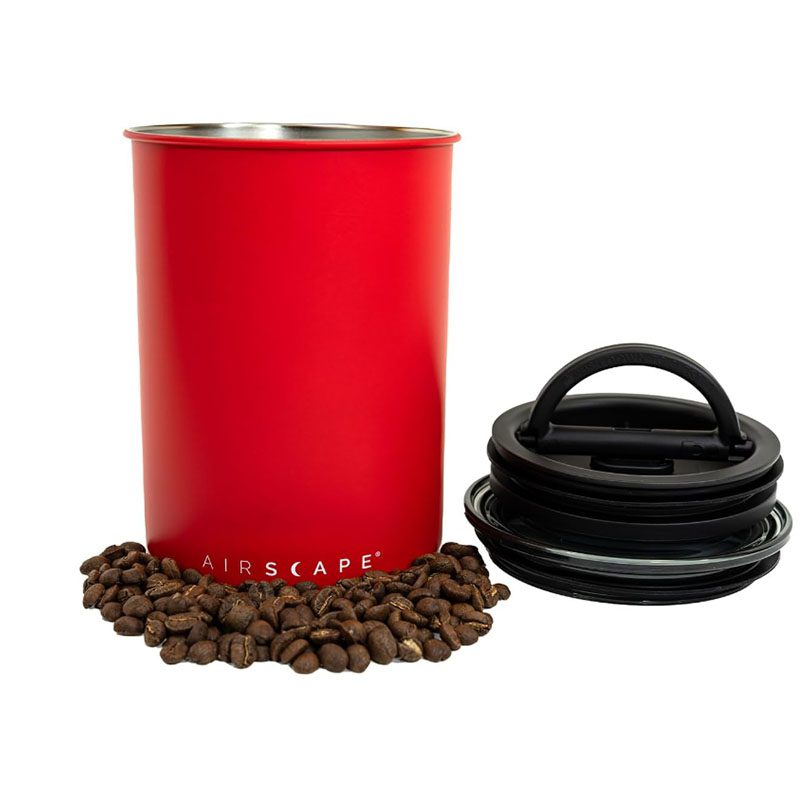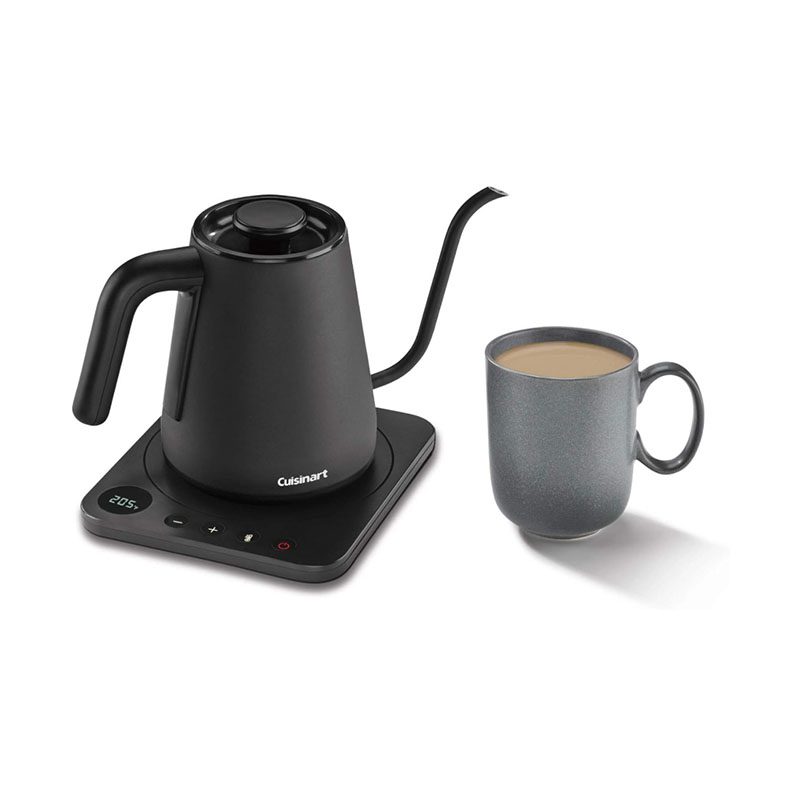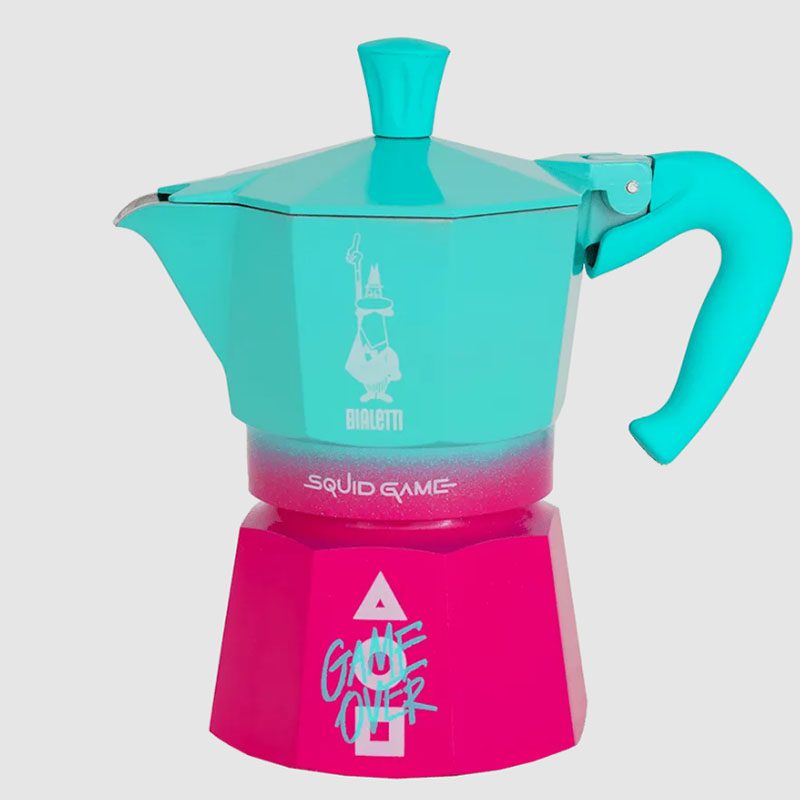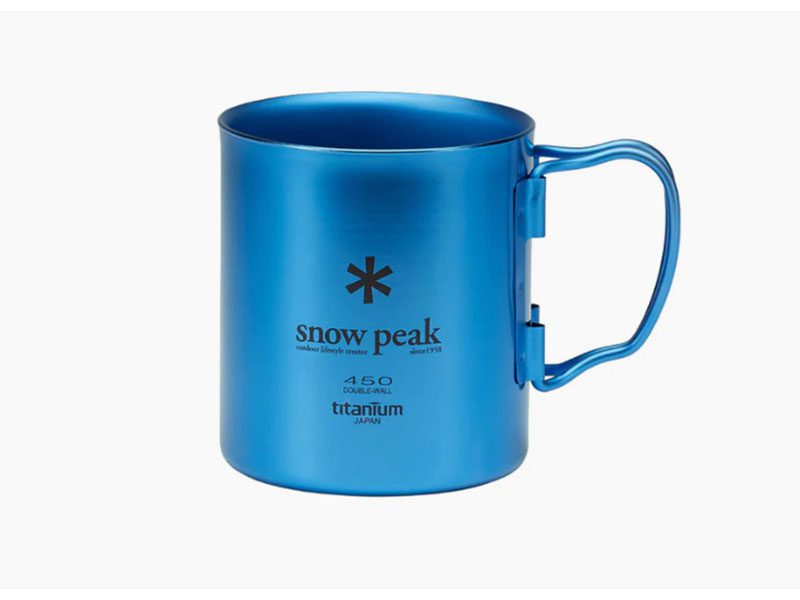Lifestyle
Digital Nomads Flock To These 10 Amazing Tax-Free Cities
Published
4 months agoon

The rise of remote work has paved the way for many to gain freedom to live and work from anywhere in the world. But for many work-from-home advocates, the right destination can also mean gaining financial benefits aside from having their dream lifestyle. This is where tax-free cities for digital nomads come in. Maximize your earnings, reduce business expenses, and enjoy a high-quality lifestyle when you relocate to the ten best tax-free cities:
The Benefits of Living in a Tax-Free City
If you are a digital nomad looking for a change of scenery, you’ll get the following benefits when you move to these destinations:
- Tax Savings: For entrepreneurs and remote workers, you’ll save on taxes when you move to any of the cities included in this list. Without paying income taxes, you can keep more of your earnings.
- Business-Friendly Incentives: Many tax-free cities offer favorable corporate policies, residency programs, and economic incentives. Not only will you have the opportunity to work in a setting that suits your lifestyle, but you’ll also reap financial benefits.
- Improved Financial Freedom: Lower tax burdens offer greater financial flexibility. This enables you to enjoy a higher standard of living, travel for leisure, and invest in your future without excessive government deductions.
Top 10 Amazing Tax-Free Cities for Digital Nomads
1. Dubai, UAE
Photo Credit: Aleksandar Pasaric on Pexels
Emerging as one of the most attractive destinations for digital nomads, Dubai has a zero personal income tax policy and a thriving business environment. As part of the United Arab Emirates, Dubai offers a state-of-the-art infrastructure, fast internet, and a well-connected global hub with flights to the world’s major cities. The city’s Virtual Working Program grants digital nomads a one-year residency visa that lets them live in Dubai while working for an overseas company.
2. Bermuda
Famous for its stunning beaches with crystal-clear waters, the British Territory of Bermuda makes working remotely even better as it doesn’t impose income taxes. Its digital nomad visa has no income requirement but will ask to see your financial status. This is to prove that you can support yourself on the island without having a job there. It also allows foreign workers to live and work for up to one year. The abundance of outdoor activities, reliable internet, and plenty of co-working spaces provide an excellent balance of work and play.
3. Croatia
An increasingly popular destination for digital nomads, Croatia is a favorite destination for digital nomads. While it isn’t entirely tax-free, its tax policies and dedicated digital nomad visa exempt you from income tax on foreign-earned income. Remote workers who qualify for this country’s Digital Nomad Residence Permit can enjoy this benefit. In addition, Croatia’s low cost of living allows you to enjoy a Mediterranean lifestyle while working remotely.
4. Antigua and Barbuda
Photo Credit: Julia Volk on Pexels
A beautiful Caribbean nation, Antigua and Barbuda offers zero personal income tax for digital nomads. This twin-island nation has stunning beaches, warm weather, and a welcoming expat community that makes it an ideal place if you’re looking to embrace the island life. It introduced the Nomad Digital Residence (NDR) visa to attract more remote workers. This allows you to live and work for up to two years without paying local income taxes.
5. Panama
Thanks to its territorial tax system, Panama is now a popular destination for digital nomads and entrepreneurs looking to enjoy foreign-earned income that isn’t taxed. Its various visa options include the Short Stay Visa for Remote Workers, which lets you live and work for up to 18 months. It requires proof of employment or self-employment with a minimum income of $36,000. This nation offers modern infrastructure, high-speed internet, and an active expat community.
6. Grenada
Earning the moniker “Spice Isle” of the Caribbean, Grenada offers zero personal income tax for digital nomads. It has business-friendly policies, breath-taking landscapes, and a relaxed lifestyle, ideal for remote workers looking for financial and individual freedom. In lieu of a dedicated digital nomad visa, you can take advantage of its long-stay visa options or explore its Citizenship by Investment Program, which gives you the chance to obtain permanent residency.
7. Montserrat
Another tax-free Caribbean hideaway, Montserrat, is a favorite of many digital nomads thanks to its zero personal income tax. Its lush landscape, volcanic scenery, and friendly local community offer superb work-life balance away from the hustle and bustle of city life. Its digital nomad visa, the Montserrat Remote Work Stamp, lets you live and work in Montserrat for up to 12 months. All you need to do is provide proof of employment with an annual income of at least $70,000.
8. Barbados
Photo Credit: Blue Ox Studio on Pexels
Having positioned itself as a top destination for remote workers, Barbados offers zero personal income tax by introducing its Barbados Welcome Stamp. This visa lets you live and work in Barbados for up to 12 months, making it an excellent option for those looking for financial and lifestyle benefits. To qualify for the Welcome Stamp, you must earn at least $50,000 annually and provide proof of remote employment or self-employment. Its hassle-free application process lets you enjoy the duty-free import of personal belongings and many other benefits.
9. Anguilla
A dream destination for many digital nomads, Anguilla is another tax-free Caribbean paradise. It offers no personal income, capital gains, or corporate tax for individuals. It introduced the Work From Anguilla program to attract more location-independent professionals. This grants them a 12-month remote work visa and access to high-speed internet, modern infrastructure, and a relaxed, safe environment. Its pristine beaches, low population density, and welcoming community make it the perfect place for productivity and leisure.
10. Uruguay
Another South American hub for digital nomads, Uruguay offers a territorial tax system that does not impose a tax on foreign-earned income. In addition to letting you enjoy a stable and high-quality lifestyle, Uruguay provides a five-year tax holiday on foreign income, an appealing offer for long-term stays. Uruguay’s excellent infrastructure, reliable internet, and active expat community let you establish legal residency via the country’s Straightforward Residency Program.
You may like
Lifestyle
Lesbian Bars Were Dying. Now They’re Making a Comeback
Published
2 weeks agoon
May 29, 2025
The buzz on the headlines these past few years makes it impossible not to notice: “Only 21 lesbian bars remain in America,” or “The rise and fall of America’s lesbian bars,” and “Why lesbian bars are disappearing.”
The once-thriving niche of lesbian bars has indeed dwindled. The ones that remain have become clandestine tourist destinations littered around the heartland. These last bastions of the lesbian community are now few and far between.
However, we see a glimmer of hope with recent developments. It could be that grassroots campaigns are poised to save lesbian bars from the brink.
Let’s back up a little.
The origin of lesbian bars
If you’re a fan of Moulin Rouge (or French history, I guess), you might know a bit about the inception of the modern lesbian bar. Artist Toulouse Lautrec often chronicled the lesbian nightlife in turn-of-the-century France. Bars like Le Rat Mort were owned and frequented by lesbians.
This phenomenon spread to other areas of high society in the early 20th century. In Weimar Germany, lesbian entrepreneur Elsa Conrad owned multiple such bars. Bars for women were a rarity in the US at the time, but the upper-crust Cafe des Beaux-Arts, which operated in New York from 1911 to 1921, is cited as an early example.
Prohibition and its aftermath
When we talk about the modern history of lesbian bars, the clock usually starts after Prohibition’s repeal in 1933. Bars like Roselle Inn in Chicago and Mona’s in San Francisco opened shortly thereafter.
It’s worth noting, however, that lesbian bars truly started to pop up during Prohibition. Where women had previously been legally discouraged from drinking, the total prohibition of alcohol was ironically an expanding force. Women could drink freely in speakeasies, and even own them.
The lesbian bars that sprang up after Prohibition were the offspring of the lesbian speakeasies that came before, such as Eve’s Hangout, which was shut down after a 1926 police raid.
The golden age of lesbian bars

Lesbian bars and communities continued to grow, aided by the growth of cities and economic prosperity that followed World War II. Bars of this era still faced plenty of threats. Gay activity was still criminalized, organized crime was eager to capitalize, and internal debates split the community in twain.
In the ‘50s, de facto segregation and economic inequality kept many Black lesbians out of major lesbian bars. So did rigid attitudes about lesbian coupling built around butch/femme (or stud/femme) binaries.
Gay rights!
The first lesbian political organization, the Daughters of Bilitis, was formed in 1955. This was an early motion in the broader LGBTQ+ rights movement, which shone a national spotlight on lesbian and gay communities.
As the movement grew throughout the ‘60s, so did identification with/interest in lesbianism. As lesbian feminism developed in the ‘70s, lesbian bars became activist spaces in addition to social ones. By the ‘80s, there were over 200 lesbian bars nationwide.
There’s just one problem, and it’s a problem that emerges any time social spaces become political ones: politics create conflict. Divisions bubbled over who should and shouldn’t be included in lesbian spaces, from trans women to straight “political lesbians.” This fed into the damaging notion that “lesbian” itself was an exclusionary term.
The slow, painful fall
These divisions persisted, but lesbian bars remained fairly prevalent throughout the ‘80s and ‘90s. New movements led to new expansions. The Combahee River Collective helped open doors for lesbians of color. The community was ravaged by the AIDS crisis, but activism on that front helped bring the broader LGBT community together. By the mid-’90s, the Lesbian Avengers were bringing lesbian issues to the forefront of the community.
So, what did kill the lesbian bar? 9/11? The recession? Is it somehow Ellen’s fault?
The truth is, there was no one incident that sent lesbian bars into freefall. The more society as a whole accepted lesbians, the more patronage for these tight-knit neighborhood bars dwindled.
Meanwhile, over the course of the ‘00s, people kind of stopped meeting each other in person. The social role that lesbian bars once played could now be fulfilled much more accessibly by online forums, and later social media.
Statistics show that interest in the “lesbian” label itself may have declined in the ‘00s and ‘10s as well. Post-lesbian discourse has tended to frame the label as too exclusive. While the broader LGBTQ+ community experienced substantial growth in the 21st century, the lesbian community didn’t share in the majority of those gains.
The ravages of COVID-19
Articles about the dramatic decline in lesbian bars started to pop up in the late ‘10s. In 2019, it was estimated that only 15 such bars remained; in fact, there were 21. A string of closings occurred throughout the 2010s as business dwindled and rents increased.
When COVID hit, activists like Erica Rose and Elina Street sounded the alarm. Rose and Street initiated the Lesbian Bar Project, a fundraising campaign aimed at preserving the remaining bars.
Lincoln, NE’s Panic Bar closed in November 2020. In Philly, Toasted Walnut shuttered in February 2021. Even as the Lesbian Bar Project and other campaigns shone a national light on the issue, it seemed like the institution was quickly becoming a thing of the past.
But wait, there’s more?
A confluence of factors led to increasingly dire conditions for the country’s remaining lesbian bars. Pandemic-era restrictions were the final straw for many. But then, something shifted.
See, the pandemic may have kept us apart from each other, but it also reminded us how much we miss sharing a space. As restrictions were lifted, grassroots movements started to form dedicated to providing new, in-person social spaces for lesbians.
The lesbian bar revival
As the tireless work of the Lesbian Bar Project kept the remaining bars afloat, social groups and pop-ups started to form across the country. Lesbian Social Detroit. SHELiFE in Miami. Sip City Mixer here in Philly.
These groups coordinate regular events that go beyond the narrow scope of a bar: picnics, beach parties, sporting events. At the same time, they reflect a growing, vibrant, and (contrary to the popular stereotype) inclusive lesbian community nationwide.
As You Are in DC began as a pop-up series, but has now set up a permanent home. The Sports Bra, the first women’s sports bar, is now open in Portland, where another lesbian bar (Doc Marie’s) is opening just this week.
You can thank Lesbian Bar Project for their tireless work keeping remaining lesbian bars alive. You can also thank the internet which, once thought a detriment to the lesbian label, has now invited a new generation of lesbians to flourish.
Looking ahead, more of these pop-ups are trying to set up brick-and-mortar locations. Dave’s Lesbian Bar in Queens is fundraising at its monthly events; so is Hot Donna’s in LA.
Thanks to a renewed focus on community organizing and mutual aid, things are finally looking up for the humble lesbian bar.

Coffee enthusiasts come in all shapes and sizes. Data in the U.S. alone shows that coffee consumption remains high. A 2024 report shows about 73 percent of Americans drink coffee daily. There’s something for everyone, from cappuccino lovers and bean enthusiasts to those craving a quick, affordable caffeine fix. Whether you’re shopping for a friend, partner, or your own home coffee bar, you’re bound to find something great from our list!
1. Airscape Coffee Canister

Photo Credit: Amazon
Airtight canisters are best for storing coffee to maintain its quality. If your loved one appreciates the quality of their coffee, the Airscape coffee canister is an excellent choice.
Made from food-grade stainless steel, the airtight canister is durable and stylish. The patented inner plunger lid with a two-way valve forces excess oxygen out of the canister and locks out excess humidity. Plus, it is available in various sizes. It’s perfect for storing coffee, as well as other dry goods like tea, sugar, flour, and spices.
The Airscape Coffee Canister is available in medium and large sizes and six colors.
2. Cuisinart GK-1 Digital Gooseneck Kettle

Photo Credit: Amazon
This is our top pick for electric gooseneck kettles. Its precise, angled spout is perfect for making pour-over coffee, perhaps with the Kalita Wave Dripper or the Chemex. Its technical details are fine-tuned: The temperature control is adjustable by five-degree increments, and its rounded handle is easy to maneuver. It has a matte black finish, so it doesn’t pick up fingerprints like stainless steel. And with its shapely design and small footprint, it looks lovely sitting on a kitchen counter.
3. Hario V60 Dripper

Photo Credit: Amazon
Brewing with a pour-over is a beloved ritual for coffee lovers. The Hario V60 Ceramic Dripper is one of the most affordable and reliable options and is my favorite.
The ceramic model costs $26.53, but there are also copper, glass, stainless steel, and plastic versions. The affordable filters ensure a clean and delicious brew. While the V60 requires some skill and precision, it’s not too difficult to master. The process encourages mindfulness, making each cup worth the effort.
4. Workhorse Grinder

Photo Credit: NY Times
The lightweight Timemore Chestnut C2 Manual Coffee Grinder is our favorite model under $100. Our testers appreciated its impressively smooth and speedy grinding action. The handle comes off, so this grinder is easy to store or travel with—excellent for outdoorsy coffee devotees who don’t want to sacrifice fresh grounds. They can dial in the coarseness and chop through about three tablespoons of coffee at a time.
5. Moka Express – Squid Game

Photo Credit: Bialetti
Bialetti and Netflix team up to launch a unique, brightly colored Capsule Collection that celebrates the popularity of the Korean series Squid Game. The vibrant, playful colors, geometric details, and “Game Over” writing enhance the iconic coffee maker, making it an essential companion throughout the game to achieve victory and win the prize.
So, what are you waiting for? Surprise your friend who’s crazy about Squid Game with the limited-edition Moka Express coffee maker.
6. East Fork Ceramic Mug

Photo Credit: East Fork Pottery
This sturdy, thoughtfully crafted ceramic mug has been my morning companion for a couple of years now, and I couldn’t love it any more than I already do. It went through a phase of viral popularity a while back, but they’re easier to find now. You might have to hop between the available colors, though, because they still do sell out.
The mug is made from robust ceramic that feels sturdy. It has a gently sloping grip big enough for most hands and feels smooth and balanced when you pick it up. Warmed by fresh coffee, the glaze kind of soothes your palm. It’s magical.
7. Instant Pot Milk Frother

Photo Credit: Instant Pot
Here’s another gift suggestion: The Instant Pot Milk Frother swiftly heats milk for lattes or creamy macchiatos with a spout designed for latte art. This versatile frother can also produce hot milk, which is made of two types: hot milk foam and trendy cold foam.
8. Snow Peak Ti-Double 450 Anodize Mug

Photo Credit: Snow Peak
This gift is perfect for friends or loved ones who enjoy camping adventures. Japanese outfitter Snow Peak offers a dizzying array of high-end outdoor apparel that’s popular with bougie car campers and dirtbag climbers alike. Still, the titanium cookware that first propelled the brand’s popularity in the U.S. remains the jewel in its crown.
Enter the Snow Peak Ti-Double 450 mug, which packs timeless style and durability into a double-walled mug that weighs only 115 grams. A pair of foldable handles welded onto the exterior provide extra protection from scalding hot liquids and a new selection of colors.
9. Ratio Six Coffee Maker

Photo Credit: Ratio
The Ratio Six Coffee Maker is the best SCA-certified option. It’s a dream machine for any pour-over enthusiast!
Crafted from durable materials like stainless steel and borosilicate glass, the Ratio Six is visually appealing and incredibly well-made. Its insulated carafe keeps coffee hot for up to an hour after brewing. Moreover, the filter basket features a heat shield to maintain the coffee’s temperature at around 200 degrees Fahrenheit (93 degrees Celsius) during brewing. The heat shield and the professional-quality spray head ensure even and consistent extraction every time.
10. Coffeeness Very Own Espresso Blend

Photo Credit: Amazon
Last but not the least, good coffee is the easiest gift to get for any coffee aficionado. This premium blend of direct-trade Brazilian coffee beans produces rich, bold, and complex espresso that’s ideal straight or paired with milk. Featuring notes of chocolate and hazelnut, our Espresso Blend is particularly low in acidity, making it easy on the stomach.
Conclusion
Our curated list is just a portion of unlimited gift ideas for your coffee-loving pal. From stylish storage solutions and precise brewing tools to unique and thoughtful gifts, you’ll find everything you need to satisfy your coffee cravings and those of your loved ones. So, explore our recommendations and discover the perfect additions to your coffee routine. Cheers to the perfect brew!

Adopting a cat for the first time can be both an exciting and overwhelming experience. Trust me – I’ve been there.
Just a few months ago, a pastel tabby tortoiseshell (or, as they say, torbie) came knocking on our door. She walked into our patio, setting off the security alarm, and when I came out to look, she meowed at me, seemingly begging for food.
Not having any pets, I rummaged through the pantry and decided a can of sausages would suffice. When I set the plate in front of her, she gobbled the food, bumping her head on my legs as a sign of gratitude between mouthfuls.
After that initial encounter, she visited our home frequently and, eventually, stayed and never left. In short, she decided to adopt us.
Needless to say, I found myself with my first cat, without any preparation ideal for a new pet parent. Luckily, I have family members and friends who are seasoned cat parents, and they were more than happy to guide me through the process.
Knowing what I know now, here’s a simple cat essentials starter kit I would’ve recommended to myself back then and anyone who wants to build a comfortable home for a feline friend.
1. Litter Box and Cat Litter
As a first-time cat parent, one of the things I was nervous about was the smell. After all, I’ve been to cat households before, and let’s just say that not all of them smelled pleasant. In this department, the choice of cat litter and how diligent you are in cleaning the litter box can spell the difference between a fresh, odor-free home and one that announces, “A cat lives here!”
As a rule of thumb, the box should be longer than the cat’s length, with enough space for them to stand, turn, and squat without feeling cramped. It should also be deep enough to hold about 2 to 3 inches of litter.
As for cat litter, there are several options out there, and here are some of the most common ones:
- Bentonite Clay Litter. Made from bentonite clay, this litter forms solid clumps when wet, making it easy to scoop daily. Many prefer this due to strong odor control. However, one drawback is the dust, which could aggravate the condition of cats with respiratory issues.
- Natural/Biodegradable Litter. This eco-friendly option is made from wood, corn, wheat, or recycled paper. Depending on the material, it varies in absorbency and odor control.
- Tofu Litter. This litter is a natural and biodegradable material made from soybean byproducts, usually leftover from tofu production. This is the litter that I buy for my cat. Though it’s not as clumpy as bentonite, I like that it’s dust-free and flushable, making litter cleaning a breeze. It also doesn’t retain nasty smells, as long as I clear it out at least once daily. It also comes in various mild scents, milk being my favorite.
Tip: Place the litter box in a quiet spot where your cat can easily access it.
2. Cat Food
Remember when I fed my cat a can of sausages the first time she came to our patio meowing for food? As it turns out, processed food, especially those that contain a lot of sodium, is a no-no for cats.
Photo by Milda Puga from Pexels
When she started visiting us regularly, I started stocking dry cat food and, later on, wet food.
- Most fur parents recommend keeping cats on an exclusively wet food diet. After all, wet food is high in moisture and low in carbs, which is ideal for cats who are obligate carnivores.
- On the other hand, dry food or kibble can be more affordable and doesn’t spoil quickly. Some also claim that it helps with dental health, though it’s debatable. If you’re offering dry food to your cat, ensure fresh water is accessible, as kibble contains very low moisture.
Though wet food is ideal due to its moisture content, choose the cat food (or a combination of the two) that works well for your cat’s health and fits your budget and lifestyle.
Tip: Look for the AAFCO (Association of American Feed Control Officials) “complete and balanced” statement on the cat food label to ensure your cat gets the nutrition it needs.
3. Food Bowl and Water Bowl or Fountain
An appropriate food and water bowl should also be part of your list of cat essentials, as they can directly impact your pet’s eating and drinking habits. Choose a wide, shallow food bowl – almost like a plate – to avoid whisker fatigue. An elevated bowl or putting the food bowl on top of a stand can also be beneficial as it prevents neck strain.
Most cats aren’t big water drinkers, so it’s essential to make it as appealing to them as possible to avoid dehydration and the risk of kidney and urinary issues. After all, cats hail from desert-dwelling ancestors and prefer running water to prevent contamination.
That said, a water fountain can be a good investment. However, you can also encourage your cat to drink from a bowl by keeping the water fresh at all times and putting it in an area away from the food dish.
4. Comfortable Cat Bed
When my cat started living with us, I was concerned that she might be sick since she slept a lot – as in most of the day. I turned to Google and learned that healthy cats sleep an average of 12 to 16 hours a day. Once I understood this, I stopped worrying and ensured she had a cozy spot to feel safe and rested.
Photo by Cats Coming from Pexels
There are many options for a cat bed, including:
- Enclosed Beds. Ideal for cats who love privacy and curling up in a secure, den-like space.
- Cushion Beds. Soft, padded surfaces provide ultimate comfort for lounging and stretching.
- Heated Beds. Great for senior cats or those who love warmth, mimicking the cozy feeling of sleeping in the sun.
Tip: If your cat ignores a new bed at first, try adding a soft blanket or something with your scent to make it more inviting.
5. Carrier for Vet Visits
A cat carrier is a must-have for every fur parent – no wonder it always comes up in gift guides for pet owners. You’ll need it for vet visits and for transporting your cat for travel or emergencies. Unlike simply carrying your cat in your arms, a proper carrier prevents escapes, minimizes anxiety, and offers a familiar space in unfamiliar situations.
Tip: Leave the carrier out at home so your cat gets used to it.
Other Cat Supplies to Consider
Here are other cat supplies you may want to add to your initial list to make your
- Scratching Posts and Pads. Usually made of cardboard or sisal, these posts and pads give your cat something to scratch instead of damaging your furniture.
- Interactive Toys and Enrichment. Mental stimulation is crucial for cats. That said, wand toys, laser pointers, and puzzle feeders will keep them active and engaged, preventing destructive behaviors.
- Grooming Supplies. A brush appropriate for your cat’s hair length can reduce tangles and prevent hairballs. You can also use pet wipes to clean your cat, especially if they don’t like bathing.
- Cat Tree or Window Perch. Cats love vertical spaces, allowing them to observe their surroundings from a high place. Cat trees and window perches can encourage exercise and offer a place where cats can feel safe and elevated.
Photo by Jakub Zerdzicki from Pexels
With the five essential items above, keeping your pet healthy and comfortable wouldn’t take much. From the simple basics to flashy gadgets and pet tech products, it all depends on your budget, lifestyle, and preferences.
Adopting a cat involves opening your home to a new family member and creating a space where the cat feels welcome, loved, and secure. Beyond food, toys, and a cozy bed, your cat needs patience and understanding to thrive and live its best life.

BeReal App: Will It Survive Its Instagram Clone?

Lesbian Bars Were Dying. Now They’re Making a Comeback

Wally Amos: From Cookie Mogul to Life’s Tough Lessons

What’s an MLM? How Does It Work and Why Is It Controversial?

Loom Review: Features, Use Cases, and How It Stacks Up Against Zoom

Explained: What Is the Deeper Connect Pico and How Does It Work?

